Top 10 Best Smart TV Brands In India In 2023.
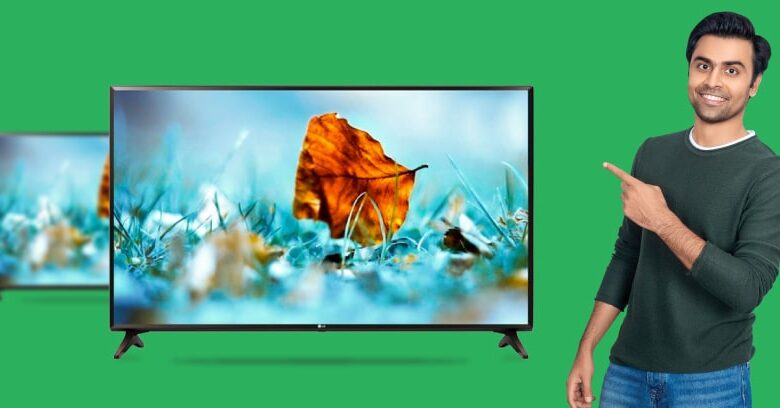
Television is, without a doubt one of our most popular forms of entertainment. TV technology has advanced significantly from traditional to smart TV, as well as from black and white to color. People want to buy the best smart tv in India in 2023 with built-in technologies and features, but the more than 50 different TV brands available confuse them.
As a result, we are here to make this process easier for you. We have compiled a list of the top TV manufacturers available in Indian markets. Read the article to learn more about the companies and find the best television brands for you.
TV is the electronic transmission of moving images and sound from a source to a receiver. Television has had a great significant impact on society by extending the senses of vision and hearing beyond the limits of physical distance. It was conceived in the early twentieth century as a possible medium for education and interpersonal communication, but by the mid-century it had evolved into a vibrant broadcast medium, using the model of broadcast radio to bring news and entertainment to people all over the world.
Television is now delivered in a variety of ways, including “over the air” via terrestrial radio waves (traditional broadcast TV), along coaxial cables (cable TV), reflected off geostationary Earth orbit satellites (direct broadcast satellite, or DBS, TV), streamed via the Internet, and optically recorded on digital video discs (DVDs) and Blu-ray discs.
In the middle of the twentieth century, the technical standards for modern television, both monochrome (black-and-white) and color, were established. Since then, advancements have been made continuously, and television technology has changed dramatically in the early twenty-first century.
Much emphasis was placed on increasing picture resolution (high-definition television [HDTV]) and changing the dimensions of the television receiver to display wide-screen images. Furthermore, digitally encoded television signals were introduced to provide interactive service and to broadcast multiple programs in the channel space previously occupied by one program.
Despite this constant technological evolution, modern television is best understood by first learning the history and principles of monochrome television and then expanding that knowledge to include color television. As a result, the focus of this article is on first principles and major developments—basic knowledge required to understand and appreciate future technological developments and enhancements.
Television system advancements
Mechanical devices
The desire to travel to distant lands is as old as the human imagination. Priests in ancient Greece studied bird entrails, attempting to see what the birds saw as they flew over the horizon. They believed that their gods, who sat in luxury on Mount Olympus, had been endowed with the ability to observe human activity all over the world.
And the first scene of William Shakespeare’s play Henry IV, Part 1 introduces the character Rumour, on whom the other characters rely for information about what is going on in England’s far reaches.
It was a dream for a long time, until television arrived, beginning with an unintentional discovery. While researching materials for use in the transatlantic cable in 1872, English telegraph worker Joseph May discovered that the electrical conductivity of a selenium wire varied.
Further investigation revealed that the change occurred when a ray of sunlight struck the wire, which had been placed by chance on a table near the window. Although it was not realized at the time, this occurrence provided the foundation for converting light into an electric signal.
Maurice LeBlanc, a French engineer, published an article in the journal La Lumière électrique in 1880 that served as the foundation for all subsequent television. LeBlanc proposed a scanning mechanism based on the retina’s temporary but finite retention of a visual image. He envisioned a photoelectric cell that would examine only one portion of the image to be transmitted at a time.
Starting in the upper left corner of the image, the cell would move to the right before returning to the left, only one line lower. It would continue in this manner, transmitting information on how much light was seen at each portion, until the entire image was scanned, much like the eye reading a page of text. A receiver would be synchronized with the transmitter, and the original image would be rebuilt line by line.
The scanning concept, which established the possibility of transmitting an entire image over a single wire or channel, became and continues to be the foundation of all television. LeBlanc, on the other hand, was never able to build a working machine. Neither was Paul Nipkow, a German engineer who invented the scanning disk, who took television to the next level.
Nipkow’s patent for an Elektrisches Telescop was issued in 1884 and was based on a simple rotating disk perforated with an inward-spiraling sequence of holes. It would be positioned to block reflected light from the subject. As the disk rotated, the outermost hole moved across the scene, allowing light from the first “line” of the image to pass through. The following hole would do the same thing, but a little lower, and so on. A complete picture, or “scan,” of the subject would be provided by one complete revolution of the disk.
This concept was eventually used by John Logie Baird in the United Kingdom (see photo) and Charles Francis Jenkins in the United States to create the world’s first successful televisions. Priority is determined by one’s definition of television. Jenkins sent a still image over radio waves in 1922, but Baird achieved the first true television success, transmitting a live human face, in 1925. (At the 1900 Paris Exhibition, a Frenchman named Constantin Perskyi coined the term “television.”)
Jenkins and Baird’s efforts were generally met with mockery or apathy. An article in the British journal Nature published in 1880 speculated that television was possible but not worthwhile: the cost of building a system would not be repaid because there was no way to make money from it. A later article in Scientific American speculated that television could have some applications, but entertainment was not one of them. The majority of people thought the idea was insane.

Nonetheless, the work continued and began to yield results and competitors. The American Telephone and Telegraph Company (AT&T) demonstrated the new technology to the public in 1927, and by 1928, the General Electric Company (GE) had begun regular television broadcasts. GE used an Ernst F.W. Alexanderson-designed system that gave “the amateur, provided with such receivers as he may design or acquire, an opportunity to pick up the signals,” which were generally of smoke rising from a chimney or other such interesting subjects.
Jenkins started selling television kits by mail the same year and launched his own television station, showing cartoon pantomime programs. Baird persuaded the British Broadcasting Corporation (BBC) to let him produce half-hour shows at midnight three times a week in 1929. The years that followed saw the first “television boom,” with thousands of viewers purchasing or building primitive sets to watch primitive programs.
Not everyone was captivated. “Television?” warned C.P. Scott, editor of the Manchester Guardian. The word is made up of half Greek and half Latin. Nothing good will come from it.” More importantly, the allure of new technology faded quickly.
The images, which were made up of only 30 lines that repeated about 12 times per second, flickered horribly on the dim receiver screens that were only a few inches high. The programs were simple, repetitive, and, in the end, boring. Nonetheless, even as the boom was disintegrating, a competing development was taking place in the realm of the electron.
Electronic devices
The final, insurmountable issue with mechanical scanning was the limited number of scans per second, which resulted in a flickering image, and the relatively large size of each hole in the disk, which resulted in poor resolution. A.A. Campbell Swinton, a Scottish electrical engineer, wrote in 1908 that the problems “can probably be solved by the employment of two beams of kathode rays” instead of spinning disks. Cathode rays are electron beams produced in a vacuum tube.
Swinton contended that using magnetic or electric fields, they could “paint” a fleeting image on the glass screen of a tube coated on the inside with a phosphorescent material. The rays would avoid flickering because they move at nearly the speed of light, and their small size would allow for excellent resolution. Swinton never built a set (because, as he said, the potential financial reward would be insufficient), but such work had already begun in Russia.
Boris Rosing, a lecturer at the St. Petersburg Institute of Technology, assembled a mechanical scanner and a cathode-ray-tube receiver in 1907. There is no record of Rosing actually demonstrating a working television, but he did have an interested student named Vladimir Zworykin, who emigrated to America shortly after.
Zworykin filed a patent application for an all-electronic television system in 1923, while working for the Westinghouse Electric Company in Pittsburgh, Pennsylvania, despite the fact that he had yet to build and demonstrate it. In 1929, he persuaded David Sarnoff, vice president and general manager of Westinghouse’s parent company, the Radio Corporation of America (RCA), to fund his research by predicting that he could create a functional electronic television system in two years with $100,000 in funding.
Meanwhile, Philo Farnsworth, a young man with only a high school diploma, demonstrated the first primitive electronic system in San Francisco in 1927. Farnsworth had raised research funds by convincing investors that he could market a commercially viable television system in six months for a $5,000 investment. In the end, it took both men’s efforts and more than $50 million before anyone made a profit.
With his first hundred thousand dollars of RCA research funding, Zworykin created the Kinescope, a functional cathode-ray receiver. Farnsworth was also perfecting his Image Dissector camera tube at the same time. Zworykin visited Farnsworth’s laboratory in 1930 and was shown the Image Dissector.
At that point, a healthy collaboration between the two pioneers might have emerged, but competition, fueled by the vision of corporate profits, kept them apart. Sarnoff made a $100,000 offer to Farnsworth for his patents, but he was politely declined. Farnsworth instead accepted a job with RCA’s rival Philco, but he soon left to start his own company.
After learning a lot from Farnsworth’s Image Dissector, Zworykin’s RCA team developed the Iconoscope camera tube in 1931, and with it they finally had a working electronic system.
In England, the Gramophone Company, Ltd. and the Columbia Phonograph Company’s London branch merged in 1931 to form Electric and Musical Industries, Ltd. (EMI). EMI learned about Zworykin’s research through the Gramophone Company’s connections with RCA-Victor, and soon a team led by Isaac Shoenberg produced a complete and practical electronic system capable of reproducing moving images on a cathode-ray tube at 405 lines per picture and 25 pictures per second.
Baird despised the intrusion of a “non-English” system, but he reluctantly began research on his own 240-line picture system by inviting Farnsworth to collaborate. On November 2, 1936, the BBC launched an electronic television competition between Baird and EMI, broadcasting from the Alexandra Palace (dubbed the “world’s first, public, regular, high-definition television station” at the time).
A fire destroyed Baird’s laboratories a few weeks later. After being declared the winner, EMI went on to monopolize the BBC’s interest. Baird never fully recovered, and he died several years later, almost forgotten and destitute.
By 1932, the dispute between RCA and Farnsworth had reached the courts, with both parties claiming to be the inventors of electronic television. Years later, the suit was finally decided in Farnsworth’s favor, and RCA signed a patent-licensing agreement with Farnsworth Television and Radio, Inc. in 1939. This was the first time RCA agreed to pay royalties to someone else.
But, thanks to its superior production capabilities and sizable public-relations budget, RCA was able to claim the majority of the credit for inventing television. Sarnoff launched America’s first regular electronic broadcasting at the 1939 World’s Fair in New York City, and 10 days later, at the official opening ceremonies, Franklin D. Roosevelt became the first U.S. president to be televised.
Before the introduction of public broadcasting services, important questions about basic standards had to be resolved, and these questions were not fully resolved everywhere until around 1951. The United States adopted a picture repetition rate of 30 frames per second, while Europe adopted a standard of 25 frames per second.
All countries eventually adopted one or the other, just as all countries eventually adopted either the US resolution standard of 525 lines per picture or the European resolution standard of 625 lines. By the early 1950s, technology had advanced so far and television had become so widely accepted that the time had come to tackle the problem of creating television images in natural colors in earnest.

Television in color
Color television was not a novel concept. A.A. Polumordvinov, a Russian scientist, invented a system of spinning Nipkow disks and concentric cylinders with slits covered by red, green, and blue filters in the late nineteenth century. But he was decades ahead of his time in terms of technology; even the most basic black-and-white television was decades away.
Baird demonstrated a color system using a Nipkow disk with three spirals of 30 apertures, one spiral for each primary color in sequence, in London in 1928. The light source at the receiver was made up of two gas-discharge tubes, one made of mercury vapour and helium for green and blue and one made of neon for red. However, the quality was quite poor.
Many inventors in the early twentieth century created color systems that appeared sound on paper but required future technology. Their fundamental concept was later dubbed the “sequential” system. They proposed scanning the image with three successive red, blue, and green filters.
The three components would be reproduced in such rapid succession at the receiving end that the human eye would “see” the original multicolored picture. Unfortunately, this method required too fast a scanning rate for the primitive television systems of the time. Furthermore, existing black-and-white receivers would be unable to reproduce the images. As a result, sequential systems became known as “incompatible.”
A “simultaneous” system, which would transmit the three primary-color signals simultaneously and would also be “compatible” with existing black-and-white receivers, would be a much more difficult, if not daunting, approach. Harold McCreary invented a cathode-ray tube system in 1924.
He intended to scan each of the three primary-color components of a picture with a separate cathode-ray camera. He would then send the three signals at the same time, using a separate cathode-ray tube for each color at the receiving end. When the resulting electron beam struck the “screen” end of each tube, phosphors coated there would glow the appropriate color. As a result, there would be three colored images, each made up of one primary color.
A series of mirrors would then be used to combine these images into a single image. Although McCreary never actually made this apparatus work, it is significant because it was the first simultaneous patent, as well as the first to use a separate camera tube for each primary color and glowing color phosphors on the receiving end.
Herbert Ives and colleagues at Bell Laboratories transmitted 50-line color television images between New York City and Washington, D.C. in 1929; this was a mechanical method that used spinning disks but sent the three primary color signals simultaneously over three separate circuits.
Following WWII, the Columbia Broadcasting System (CBS) demonstrated its own sequential color system designed by Peter Goldmark. It was impressive enough that The Wall Street Journal had “little doubt that color television [had] reached the perfection of black and white.” It combined cathode-ray tubes with spinning wheels of red, blue, and green filters.
Thus began a protracted battle between CBS and RCA over the fate of color television. While CBS lobbied the FCC to approve the Goldmark system for commercial television, Sarnoff warned against using a “horse-and-buggy” system that was incompatible with monochrome television. Simultaneously, Sarnoff whipped his RCA team into developing the first all-electronic compatible color system.
The FCC approved CBS’s color television and associated broadcast standards for immediate commercial use in 1950. However, only about two dozen of the 12 million television sets in use could receive the CBS color signal, and the broadcasts were discontinued after only a few months. Sarnoff and RCA then proudly unveiled their new system in June 1951. The design separated the blue, red, and green components of the original image and focused each component on its own monochrome camera tube using dichroic mirrors.
Each tube generated a signal that corresponded to the image’s red, green, or blue component. Three electron guns were used in the receiving tube, one for each primary-color signal. In turn, the screen was made up of hundreds of thousands of tiny triangles of discrete phosphors, one for each primary color. Every 1/60 of a second, the entire image was scanned, separated into three color components, and transmitted; and every 1/60 of a second, the receiver’s three electron guns simultaneously painted the entire picture with red, green, and blue, left to right, line by line.
Furthermore, the RCA color system was backwards compatible with existing black-and-white sets. It accomplished this by dividing the three color signals into two: the total brightness, or luminance, signal (referred to as the “Y”) and a complex second signal containing the color information. The Y signal was equivalent to a standard monochrome signal, so any black-and-white receiver could pick it up and ignore the color signal.
The National Television Systems Committee (NTSC) was reformed in 1952, this time with the goal of developing a “industry color system.” The NTSC system, which was demonstrated to the press in August 1952 and would serve until the twenty-first century, was essentially the RCA system. The CT-100 (shown above) was the first RCA color television set to leave the factory in early 1954.
It had a 12-inch screen and cost $1,000, compared to current 21-inch black-and-white televisions that cost $300. Color television did not become profitable until the 1960s.
Japan adopted the NTSC color standard in 1960. Over the next decade, two distinct systems emerged in Europe: in Germany, Walter Bruch developed the PAL (phase alternation line) system, and in France, Henri de France developed SECAM (système électronique couleur avec mémoire).
Both were essentially the NTSC system, with minor tweaks. Thus, by 1970, North America and Japan were using NTSC, while France, its former dependencies, and the countries of the Soviet Union were using SECAM, and Germany, the United Kingdom, and the rest of Europe were using PAL. Despite the arrival of digital television, these are still the color television standards today.
Television in digital format
In the 1990s, digital television technology became available to the general public. Professional action in the United States was sparked by a demonstration of a new analog high-definition television (HDTV) system by NHK, Japan’s public television network, in 1987. The FCC responded by announcing an open competition to develop American HDTV, and in June 1990, General Instrument Corporation (GI) surprised the industry by announcing the world’s first all-digital television system.
The GI system, designed by Korean-born engineer Woo Paik, displayed a 1,080-line color picture on a wide-screen receiver while transmitting the necessary information over a conventional television channel. Previously, the main impediment to producing digital television was a lack of bandwidth.
Even after digitization, a standard-definition television (SDTV) signal would take up more than ten times the radio frequency space of conventional analog television, which is typically broadcast in a six-megahertz channel. HDTV would have to be compressed to about 1% of its original size in order to be a viable alternative. The GI team solved the problem by transmitting only changes in the image once a complete frame was available.
Both Zenith Electronics Corporation and the David Sarnoff Research Center (formerly RCA Laboratories) announced their own digital HDTV systems within a few months of GI’s announcement. These and four other television laboratories formed a “Grand Alliance” in 1993 to develop marketable HDTV. Aside from HDTV, a slew of new possibilities emerged in the interim.
Digital broadcasters could certainly show a high-definition image over a standard six-megahertz channel, but they could also “multicast,” sending five or six digital standard-definition programs over the same channel. Indeed, digital transmission enabled “smart TV,” in which the home receiver could function as a computer in its own right. This meant that broadcasters could offer computer services such as e-mail, two-way paging, and Internet access in addition to pay-per-view or interactive entertainment programming.
In late 1996, the FCC approved standards proposed by the Advanced Television Systems Committee (ATSC) for all digital television in the United States, both high-definition and standard-definition. According to the FCC’s plan, all stations in the country would be broadcasting digitally on a second channel by May 1, 2003.
They would continue to broadcast in analog; programs would be “simulcast” in both digital and analog, giving the public time to transition gradually. Analog transmissions would cease in 2006, old television sets would become obsolete, and broadcasters would return their original analog spectrum to the government to be auctioned off for other purposes.
That was the plan, at least. In a very short period of time, the FCC’s schedule appeared to be in jeopardy, as the future form of digital television remained unknown. Less than 3% of the 25 million TV sets sold in the United States in 2000 were digital, and while 150 stations in 52 cities were broadcasting digitally by that year, the majority of those stations were only broadcasting standard-definition programs in digital format.
There was almost no HDTV to be found, and few viewers were aware of the digital channels. Furthermore, despite the fact that two-thirds of American viewers had cable television, most cable companies refused to carry the new digital channels. In response, the FCC was considering a rule requiring them to do so; however, this would necessitate consumers purchasing a digital cable box, and the industry was divided on how to design such a box.
Meanwhile, Europe was far ahead of the US in digital broadcasting, in part because there was no requirement to include HDTV. A consortium of European broadcasters, manufacturers, and regulatory bodies agreed on the Digital Video Broadcasting (DVB) standard in 1993, and efforts to apply this standard to satellite, cable, and then terrestrial broadcasting began.
By the end of the decade, approximately 30% of all UK households had access to digital programming via digital TV sets or conversion boxes atop their analog sets. Japan launched its own digital broadcasting via satellite in December 2000, with plans to launch digital terrestrial broadcasting in 2003 using a DVB modification.
Both Japan and Europe had similar target dates for ultimate conversion to digital television, namely between 2006 and 2010. However, they, too, encountered similar stumbling blocks, casting doubt on global timetables for the full transition to digital television.
Top 10 Best Smart TV Brands In India In 2023
1. Sony – India’s Leading Television Brand
One of India’s most well-known best TV brands that is constantly improving its technology. Sony TVs include an OLED display with screen vibration sound for an immersive audio experience. Furthermore, because of the X-Reality Pro picture engine, which produces excellent output on the VA screen, this brand is without a doubt the best in terms of image quality. Finally, Sony TVs are priced between Rs. 24,150 and Rs. 5,49,100.

2. LG – India’s Best-Selling Television Brand
LG is a well-known best led tv brand in India because it offers high-quality technology at a reasonable price. This company was the first to introduce OLED TVs in India. When it comes to image quality, LG also employs IPS panels for improved color output and viewing angles.
Furthermore, LG(Life’s Good) TVs are the only television brands that include Dolby Vision for improved contrast. LG’s Web OS is one of the best operating systems available, supporting a wide range of applications. LG TVs range in price from Rs. 20,420 to Rs. 2,76,660.

3. Panasonic – Best Television Brand in India in 2022
Panasonic is a brand that is synonymous with high-quality products. It has the most fashionable style, a fantastic display, and the best sound quality of any of the best television brands. It has an OLED display and a cutting-edge HCX Pro CPU. Panasonic TVs also have a high level of visual quality. Panasonic employs IPS panels, which provide light even from wider angles.
This is the best smart tv brand in the world, and it also includes an improved version of Firefox OS called My Home Screen, as well as support for HDR10, HDR10+, and HLG. Last but not least, the most appealing aspect of this brand is its competitive pricing of goods. Panasonic Smart TV prices range between Rs. 18,590 and Rs. 1,32,590.
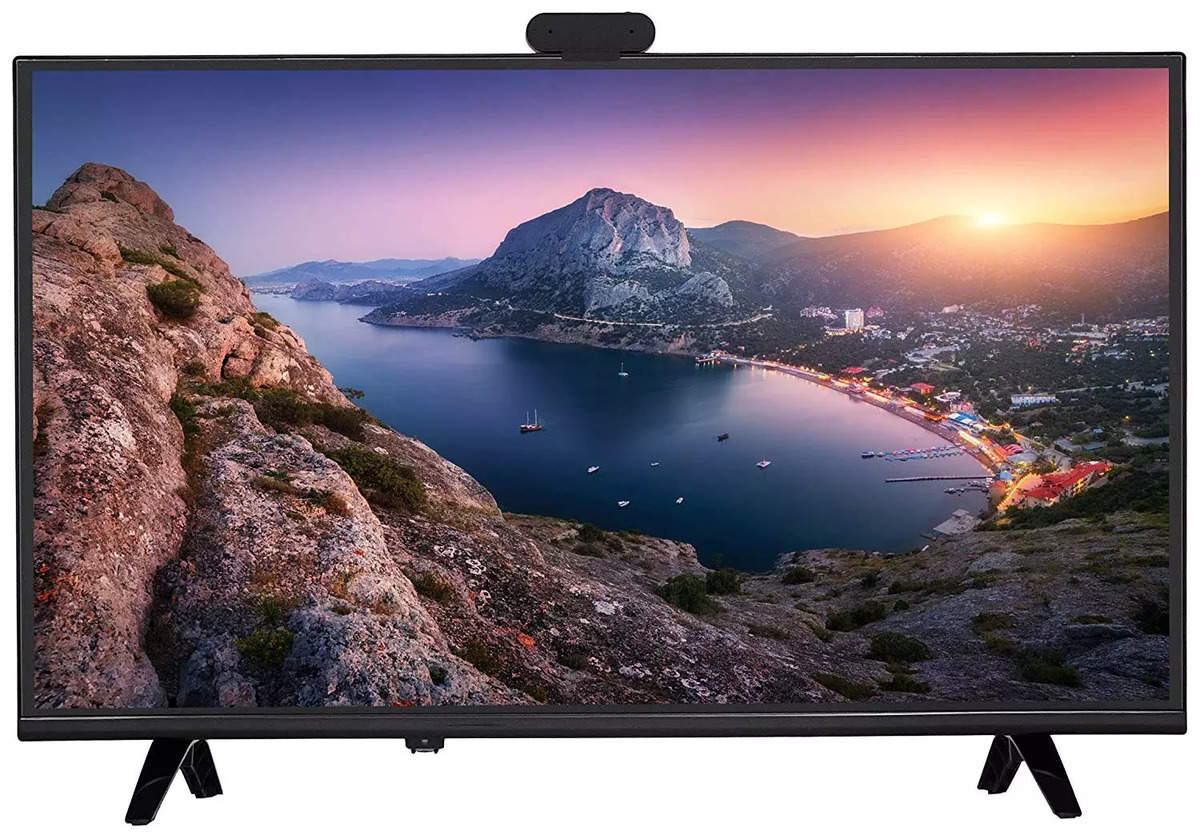
4. Samsung – The World’s Best Television Brand
Samsung, one of India’s most prestigious brands, is constantly introducing new technology. The QLED and curved screens found on Samsung’s best-led tv improve your viewing experience. Furthermore, the HyperReal engine with VA panels produces stunning images. Surprisingly, the TVs support Tizen OS and include HDR10 and HDR10+. The price of a Samsung Smart TV ranges between Rs. 18,770 and Rs. 1,83,190.
5. OnePlus – The Most Recent Best Smart TV Brand
OnePlus is the best-looking led television. The QLED technology used in these TVs produces the most appealing graphics. Furthermore, the Gamma color magic engine provides excellent image quality.
Furthermore, Dolby Vision HDR enhances the screen’s contrast and makes it a colorful best tv to buy in 2022. The prices of OnePlus TVs range from Rs. 16,810 to Rs. 52,550.

6. Haier – Best LED TV Manufacturer
TVs manufactured by the reputable company Haier are both long-lasting and reasonably priced. The majority of TVs’ full HD, curved LED displays will improve your TV viewing experience. This Brands TV also has a 4K display and a bezel-less design to improve image quality.
And this is one of the best-led television brands in India, operating primarily on the Android operating system. Haier LED TVs range in price from Rs. 20,420 to Rs. 80,920.
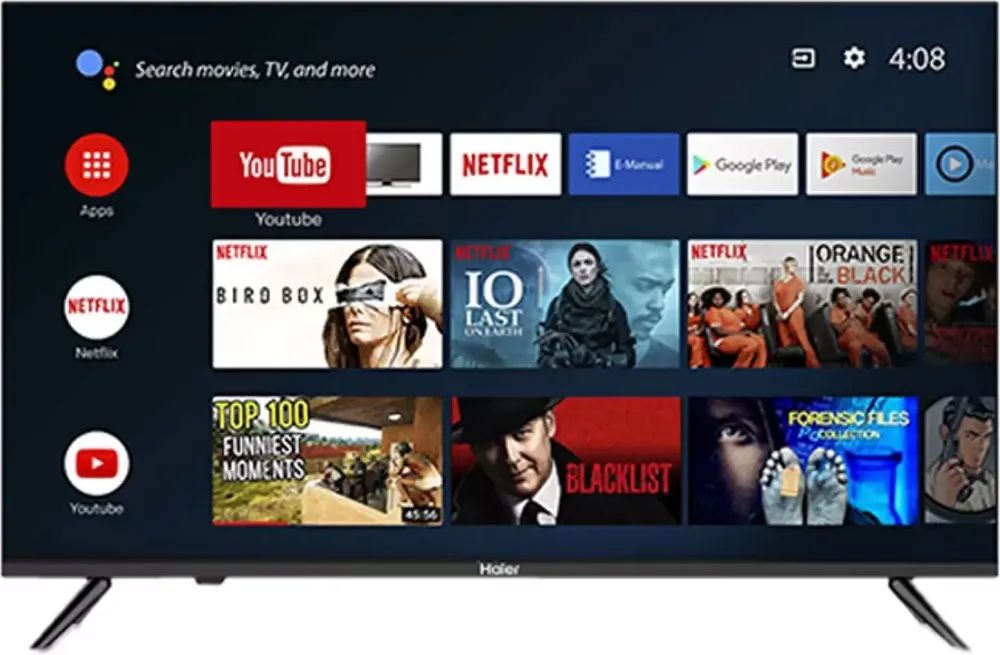
7. Mi – India’s Newest Smart TV Brand in 2022
Mi, a well-known company, manufactures reasonably priced high-quality best-led tv in India. The majority of this brand’s televisions are powered by Amlogic Cortex processors, which provide excellent viewing quality.
It also has a 10-bit LED panel and Mi’s vibrant image engine, which deliver incredible color vibrancy and accuracy. Locate the best mi tv showroom near you to shop for the best TV at the best prices. This Branded TV supports HDR10 and Dolby audio technology. Mi TVs range in price from Rs. 16,290 to Rs. 1,35,570.

8. TCL – The best TV brand in India.
TCL is well-known in India for producing some of the best-led televisions. Choose a TCL TV if you enjoy watching movies and want a home theater experience because it has an excellent display and unrivaled sound performance. Furthermore, dynamic color technology improves image quality.
The televisions also include Dolby Audio, which provides amplified and unrealistic sound. As a result, it is the best television brand in India at an affordable price. TCL televisions are priced between Rs. 14,700 and Rs. 99,830.

9. Sansui – New Smart TV Brand
In India, a company called Sansui manufactures many branded televisions with distinct features in a variety of sizes. The majority of TVs have curved displays, which make watching more exciting. Furthermore, the 4K super HD display and IPS screens produce excellent picture quality.
Sansui TVs also include Linux OS and Dolby Vision, which support a variety of apps. It is one of the best upcoming television brands with a lot to offer users. Sansui TVs range in price from Rs. 15,230 to Rs. 48,450.

10. BPL – The Most Recent Smart TV Brand
A BPL television is frequently the most expensive piece of electrical equipment in the home. BPL manufactures high-quality televisions in a variety of price ranges.
Furthermore, this brand’s latest best tv in India includes unique features such as Chromecast and pre-installed applications. These televisions come with a one-year warranty. And the best television brand in India can be purchased on a budget. The BPL television ranges in price from Rs. 13,990 to Rs. 17,990.
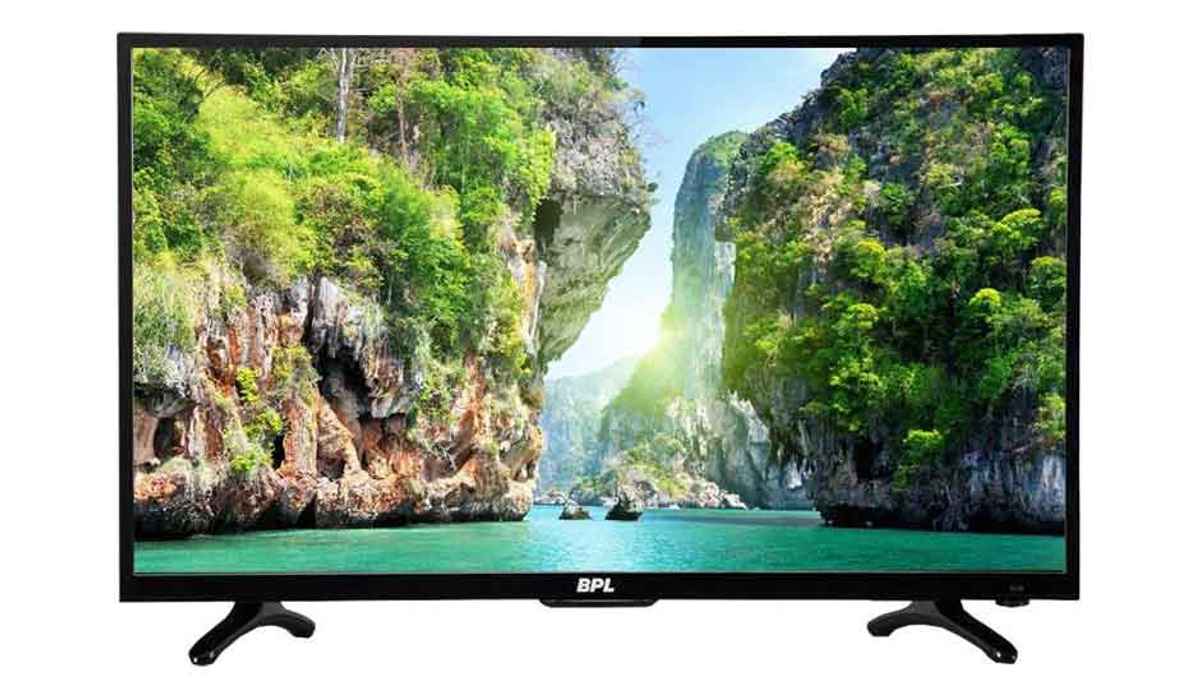
Television system principles
The television image. Motion perception in humans. A television system includes equipment at the point of production, equipment in the viewer’s home, and equipment used to transmit the television signal from the producer to the viewer. As stated in the introduction to this article, the goal of all of this equipment is to extend the human senses of vision and hearing beyond their natural physical distance limits. As a result, a television system must be designed to include the essential capabilities of these senses, particularly vision.
The ability of the human eye to distinguish the brightness, colors, details, sizes, shapes, and positions of objects in a scene before it is one of the aspects of vision that must be considered. The ability of the ear to distinguish the pitch, loudness, and distribution of sounds is one aspect of hearing. In order to meet these requirements, television systems must strike appropriate compromises between image quality and reproduction costs.
They must also be designed to overcome the effects of interference while minimizing visual and audial distortions in the transmission and reproduction processes. The specific compromises chosen for a given television service—for example, broadcast or cable service—are embodied in the television standards adopted and enforced by each country’s responsible government agencies.
Social media networking
Some Smart TV platforms include or can be expanded with social networking technology capabilities. The addition of social networking synchronization to Smart TV and HTPC platforms may provide more interaction with on-screen content and other viewers than most televisions currently offer, while also providing a much more cinematic experience of the content than most computers currently offer.
Advertising
Some Smart TV platforms also support interactive advertising (companion ads), addressable advertising with local ad insertion and targeted advertising, as well as other advanced advertising features such as ad telescoping via VOD and DVR, enhanced TV for consumer call-to-action, and audience measurement solutions for ad campaign effectiveness.
The marketing and trading opportunities provided by Smart TVs are sometimes referred to as t-commerce. Taken together, this bidirectional data flow implies that Smart TVs can and are used for covert surveillance of their owners. Even in sets that are not pre-configured to do so, default security measures are frequently lax, allowing hackers to easily break into the TV.
“Watching You Watch: The Tracking Ecosystem of Over-the-Top TV Streaming Devices,” a 2019 study conducted at Princeton and the University of Chicago, revealed that the vast majority of streaming devices will covertly collect and transmit personal user data, including captured screen images, to a vast network of advertising and analytics companies, raising privacy concerns.
eMarketer, a digital marketing research firm, predicted a 38 percent increase – to close to $7 billion, a 10% television advertising market share – in advertising on connected TV platforms like Hulu and Roku in 2019, with market indicators predicting a figure of $10 billion by 2021.
Security
There is evidence that a Smart TV can be attacked. Some serious security flaws have been discovered, and some successful attempts to run malicious code to gain unauthorized access have been videotaped. There is evidence that it is possible to gain root access to the device, install malicious software, access and modify remote control configuration information, remotely access and modify files on TV and attached USB drives, and access the camera and microphone.
Concerns have also been raised that hackers may be able to remotely activate the microphone or webcam on a smart TV, allowing them to listen in on private conversations. A common loop antenna can be configured for a bidirectional transmission channel capable of uploading data as well as receiving it. Security researchers discovered a similar vulnerability in more series of Smart TVs in 2012, allowing hackers to gain external root access to the device.
Antivirus for Smart TVs is becoming increasingly popular, and some security software companies are already working on a solution with digital TV partners. There appears to be only one antivirus for Smart TVs: “Neptune,” a cloud-based antimalware system developed by Ocean Blue Software in collaboration with Sophos.
However, antivirus firm Avira has teamed up with digital TV testing firm Labwise to develop software to protect against potential attacks. Because of eavesdropping concerns, the privacy policy for Samsung’s Smart TVs has been dubbed Orwellian (a reference to George Orwell and the dystopian world of constant surveillance depicted in 1984) and compared to Telescreens.
Hackers have taken advantage of Smart TV capabilities such as operating source code for applications and its unsecured Internet connection. Hackers and even companies can gain access to passwords, IP address data, and credit card information for advertising purposes. Vizio is one company that has been caught in the act. [Citation required] The classified documents, codenamed Vault 7, date from 2013 to 2016, and include information on the CIA’s software capabilities, such as the ability to compromise Smart TVs.
Access Restrictions
Internet websites can block Smart TV access to content at any time or tailor the content that each platform receives. Since the launch of Google TV in October 2010, NBC, ABC, CBS, and Hulu have blocked Google TV-enabled devices from accessing their Web content. Google TV devices were also barred from accessing any Viacom subsidiary programs.
Reliability
In 2017, after a software update, high-end Samsung Smart TVs stopped working for at least seven days. Smart TV apps are rarely upgraded to the latest version; for example, Netflix does not support older TV versions with new Netflix upgrades.
In Japan, “intelligent” television receivers were introduced in the early 1980s. By adding an LSI chip with memory and a character generator to a television receiver, Japanese viewers were able to receive a mix of programming and information transmitted over spare lines of the broadcast television signal.
A patent for a “intelligent” television system linked with data processing systems via a digital or analog network was filed in 1994 (and extended the following year). Aside from being linked to data networks, one key feature is its ability to automatically download and process necessary software routines based on a user’s demand.
However, descriptions of the elements of a smart television can be found in public discourse dating back to the early 1980s, if not earlier, with the introduction of videotex services, particularly teletext information for reception by television sets, prompting commentators to believe that televisions and accessories would evolve to include a variety of related activities.
“In the long run, this machine is likely to develop into a multi-purpose receiver, for electronic mail, dealing with the bank, calculations, remote information – and ‘Not the nine o’clock news’ or ‘Casablanca’ on video,” one commentator predicted.
The widespread adoption of digital television in the mid-late 2000s and early 2010s significantly improved Smart TVs. In 2015, major TV manufacturers have announced the production of Smart TVs only for their middle-to-high-end TVs. During the late 2010s, smart TVs became the dominant form of television. Nielsen reported at the start of 2016 that 29 percent of those with an annual income of more than $75,000 owned a Smart TV.
Smart TVs also provide access to user-generated content (either on an external hard drive or in the cloud), as well as interactive services and Internet applications, such as YouTube, with many employing HTTP Live Streaming (also known as HLS) adaptive streaming. Smart TV devices make traditional content curation easier by combining information from the Internet with content from TV providers.
Users can use services to track and receive reminders about shows or sporting events, as well as change channels for immediate viewing. Some devices include interactive organic user interface / natural user interface technologies for navigation controls and other human interaction with a Smart TV, such as second screen companion devices, spatial gesture input, similar to Xbox Kinect, and even speech recognition for natural language user interface.
Smart TV creates new features to satisfy consumers and businesses, such as new payment methods. LG and PaymentWall have teamed up to allow customers to access purchased apps, movies, games, and other content via a remote control, laptop, tablet, or smartphone. This is intended to make checkout easier and more convenient.
Smart TV technology and software are still in the early stages of development, with both proprietary and open source software frameworks already available. These can run applications (which are sometimes available through a digital distribution platform known as a ‘app store,’ play over-the-top media services and interactive on-demand media, personalized communications, and have social networking features.
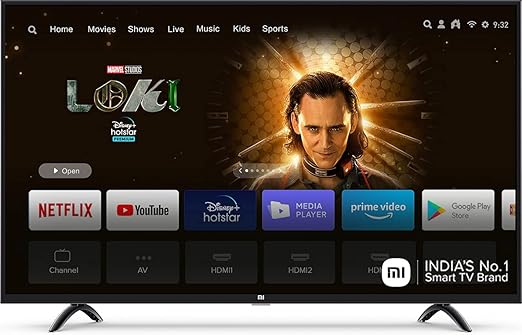
Individual companies manage framework platforms such as Android TV, Boxee, Firefox OS, Frog, Google TV, Horizon TV, Inview, Kodi Entertainment Center, Mediaroom, MeeGo, OpenTV, Plex, RDK (Reference Development Kit), Roku, Smart TV Alliance, ToFu Media Platform, Ubuntu TV, Vewd, and Yahoo! Smart TV. HbbTV, which is provided by the Hybrid Broadcast Broadband TV association, CE-HTML, which is part of Web4CE, OIPF, which is part of HbbTV, and Tru2way are framework platforms managed by technology companies.
Amazon, Apple, Google, Haier, Hisense, Hitachi, Insignia, LG, Microsoft, Netgear, Panasonic, Philips, Samsung, Sharp, Sony, TCL, TiVO, Toshiba, Sling Media, and Western Digital are currently using Smart TV platforms. Some of the best Smart TV platforms include Sony, Panasonic, Samsung, LG, and Roku TV.
According to a report by the research firm NPD According to In-Stat, only about 12 million U.S. households had their Web-capable TVs connected to the Internet in 2012, despite the fact that an estimated 25 million households owned a set with built-in network capability. According to In-Stat, by 2016, 100 million homes in North America and Western Europe will have television sets that mix traditional programming with internet content. By the end of 2019, there were 1.26 billion Connect TVs installed worldwide.
Over the years, the number of households using over-the-top television services has rapidly increased. In 2015, 52% of U.S. households had a Netflix, Amazon Prime, or Hulu Plus subscription; 43% of pay-TV subscribers also had a Netflix subscription, and 43% of adults used a streaming video on demand service at least monthly. Furthermore, 19% of Netflix subscribers shared their membership with people outside their households. HBO Now piqued the interest of 10% of adults at the time.
Which companies manufacture Smart TV?
Every major TV manufacturer has abandoned dumb TVs in favor of making every set “smart.” Hisense, LG, Panasonic, Philips, Samsung, Sharp, Sony, TCL, Toshiba, and Vizio are among the top smart TV manufacturers. (See the best TV brands for some of our favorites from all of the major TV manufacturers.)
While most of these companies tout their smart platforms as the most up-to-date, be wary of low-cost TVs that only vaguely mention smart TV capability. These off-brand smart TV platforms may leave you with a limited app selection, poor performance, and concerning security flaws.
How do Smart TVs access the internet?
A smart TV connects to your home network via wired Ethernet or built-in Wi-Fi to provide streaming video and services on your TV. Most modern televisions support 802.11ac Wi-Fi, but older models may still use the older 802.11n standard. Some of the most recent models will also support the new Wi-Fi 6 standard (see our article about Wi-Fi 6: What it is and why it is better), but this is still uncommon.
If your smart TV isn’t receiving a strong enough wireless signal, there are a few solutions. If you’re in the market for a new router, any model on our best Wi-Fi routers list will suffice, including the most affordable options.
Mesh routers, which extend coverage throughout a home, are another option and are ideal for homes with multiple TVs, not all of which are close to your main router. The Nest WiFi and Netgear Orbi WiFi 6 are two such models that have proven to be excellent solutions for people attempting to cover a large home with Wi-Fi in our tests.
Wi-Fi range extenders are also available from companies like Netgear, but they take some time and patience to set up and install.

What about safety?
Many smart TVs include their own webcams and microphones, which could increase the chances of outside parties hacking these components to eavesdrop or companies using always-on monitoring for marketing purposes.
Malware attacks, such as viruses or worms, are also possible in the meantime. If you use your smart TV for online shopping, hackers may gain access to private information or financial information.
For these reasons, if you have children at home, you should secure your home WiFi and use parental controls. There is also a growing market for smart TV-specific security and antivirus software, so check with the TV manufacturer to see which program will work with the platform.
If you are extremely concerned about security risks, you can choose a streaming media device instead, which has many of the same features and functionality as a smart TV but does not have a built-in microphone or webcam.
The overall picture
There are numerous ways to enjoy online media these days, and smart TVs are just one of many excellent options. If you aren’t quite ready to purchase a new television, consider a set-top streaming device or a media stick instead. And, if you’re ready to upgrade to a smarter TV, take your time, do some research, read reviews, and double-check the specifications to ensure you get one with the features you want. There is an ideal smart TV out there for a savvy shopper.
Many people prefer smart TVs because they eliminate the need to connect a separate connected streaming device, such as a Roku or Amazon Fire. You can watch a large number of “channels” without having to connect a TV antenna or pay for a costly cable or satellite plan.
Most smart TVs, however, are also compatible with a broadcast antenna or satellite/cable, allowing you to get the best of both worlds. If you watch a lot of local sports over an antenna, for example, most models allow you to do so while also providing high-tech internet TV and over-the-top options.
Another emerging trend is the compatibility of smart TVs with smart home devices such as Google Assistant or Amazon Alexa. You can use them not only to change channels by voice command, but you can also connect your smart TV to your connected home system to view smart lights, doorbells, locks, thermostats, and other devices.
Is there anything a smart television cannot do?
Yes, any technology always has some limitations. To begin, while most smart TVs include many of the same popular apps/channels, some niche offerings may be exclusive to specific brands. If you’re looking for a specific viewing option, it’s worth doing some research. You can easily find consumer reviews on any model of smart TV by conducting a web search.
You should also be aware that some websites choose to restrict access to specific devices or to customize how content appears on various platforms, including smart TVs.




